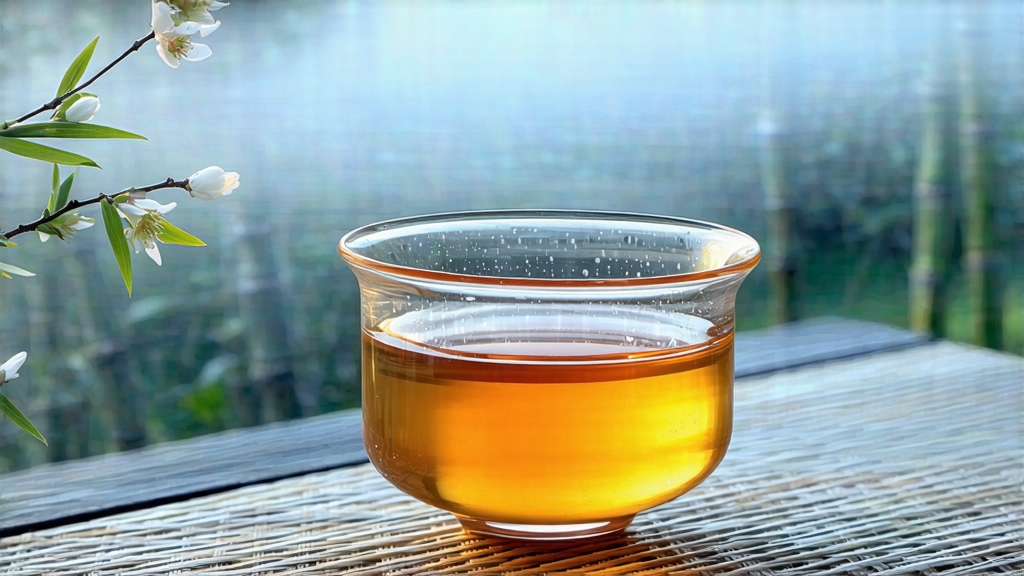
Among the six great families of Chinese tea, white tea is the least theatrical yet the most elusive, and within that quiet clan Silver Needle—Bai Hao Yin Zhen—occupies the highest throne. International drinkers often meet white tea through bagged blends, but the original Silver Needle remains a niche treasure even inside China. To understand it is to listen to a story told in a whisper: no roasting drama, no rolling acrobatics, only air, time, and the patience of Fujian’s mountain people.
History: from imperial tribute to minimalist icon
Song-dynasty emperor Huizong (1082-1135) praised “white buds among the tribute cakes,” yet the first clear record of loose Silver Needle appears in the Daoguang era (1821-1850) when the county of Fuding replaced compressed cakes with gently dried buds. Coastal trade routes carried it to Hong Kong, then to Southeast Asia where Cantonese merchants marketed it as “cooling medicine.” By 1891 European ports listed “Pekoe Points” at auction, but quantity was minuscule; one chest of Silver Needle equaled twenty chests of black tea in value. After 1949 the state reserved most production for diplomatic gifts; only since 2005 has the western specialty scene discovered its honeyed restraint.
Terroir: why Fuding and Zhenghe argue like Burgundy and Bordeaux
Authentic Silver Needle comes only from Fujian’s two core counties—Fuding in the northeast and Zhenghe in the interior. Fuding’s lower hills, granitic soils and maritime mist give needles that are plump, silver-green, and famously fragrant; Zhenghe sits higher, on red lateritic earth, yielding slimmer needles with a deeper, hay-like sweetness. Purists treat them as distinct crus; blenders marry them for balance. Both areas enjoy the “three misty moons” of early spring: March nights when temperature plunges yet the soil stays warm, forcing the tea bush to pack amino acids into every nascent bud.
Plants: the secret is not just down but DNA
Only three cultivars are legally recognized for Silver Needle: Fuding Da Bai, Zhenghe Da Bai, and the rarer Fuding Da Hao. Da Bai (“big white”) bushes sprout buds that can reach 3.5 cm, each sheathed in a velvet so dense it looks powdered by frost. Da Hao (“big down”) produces even larger buds but lower yield, so it is reserved for top-tier micro-batches. Farmers prune the bushes into wide umbrellas that almost touch the ground, encouraging horizontal growth and shading the buds from direct sun—nature’s own withering assistant.
Harvest calendar: one dawn, two leaves refused
The picking window opens when the air still smells of night jasmine and closes before the cicadas start. Standard rule: “no open leaf, no raindrop, no fingernail.” Workers break the bud cleanly at the base using thumb and index pad, dropping it into a shallow bamboo creel lined with palm leaf to prevent bruising. A skilled picker gathers barely 500 g of fresh buds in a morning; 25 000 buds—five hours of stooped labor—yield 100 g of finished tea.
Craft: the art of doing almost nothing
Withering is the only transformative step. Traditionally the buds are laid on reed trays stacked like bunk beds in a sun-lit corridor; modern factories use climate chambers set to 22 °C and 65 % humidity. For the first six hours the buds lose water rapidly; for the next thirty-six they rest, enzymes nibbling at proteins and starches, generating maltol and jasmine lactone—the molecules behind Silver Needle’s signature honey-cucumber note. No rolling, no pan-fire; only a final gentle bake at 40 °C to lower moisture to 5 %. The entire cycle respects the Taoist ideal of wu-wei: action through non-action.
Grades: how to read a needle’s résumé
Chinese commerce sorts Silver Needle into four unofficial bands. “Imperial” means buds harvested before Qingming festival (early April), uniform 2.5 cm, more down than color. “Grade One” allows buds picked within the next fortnight, still pure but slightly less dense. “Grade Two” mixes a few open leaves, while “Garden” level may contain stems or later flushes—still pleasant yet lacking the hushed opulence. International buyers should distrust labels that simply